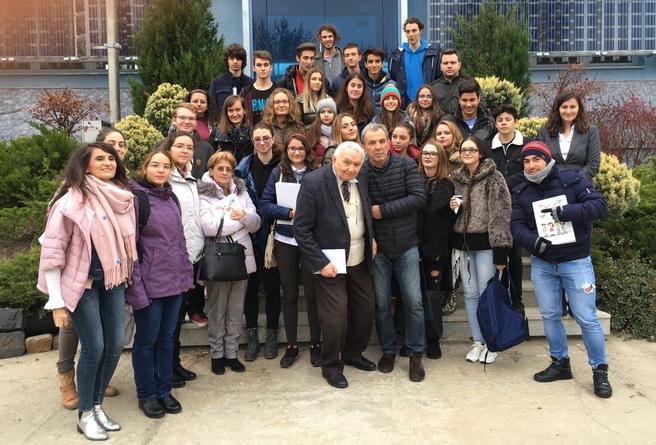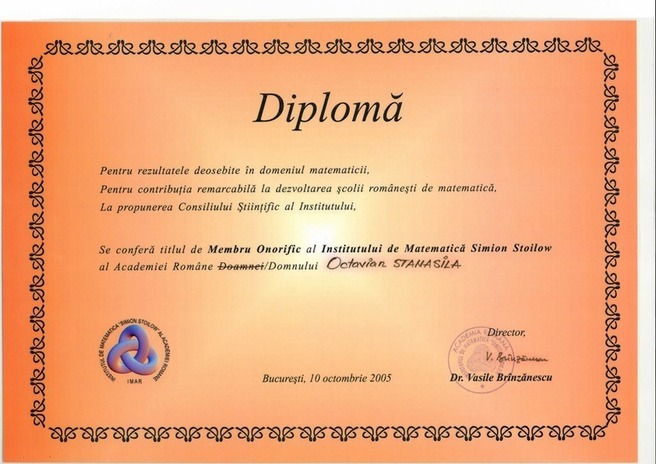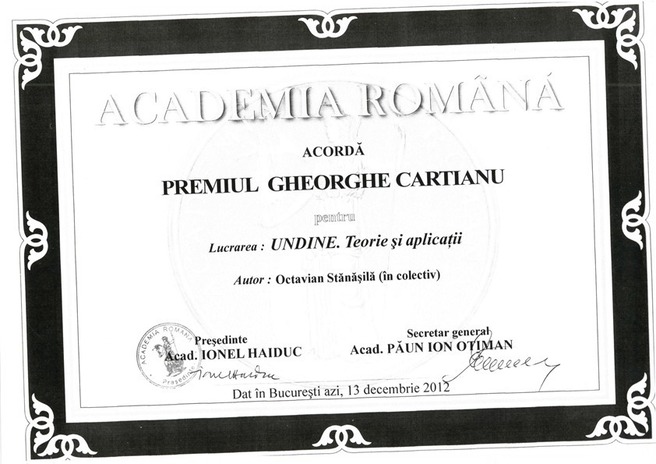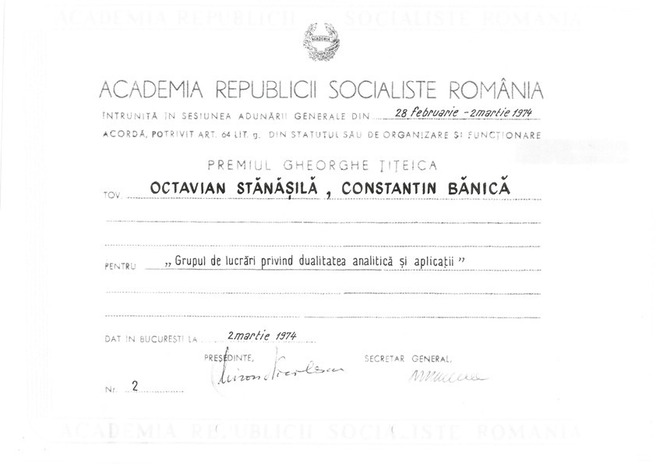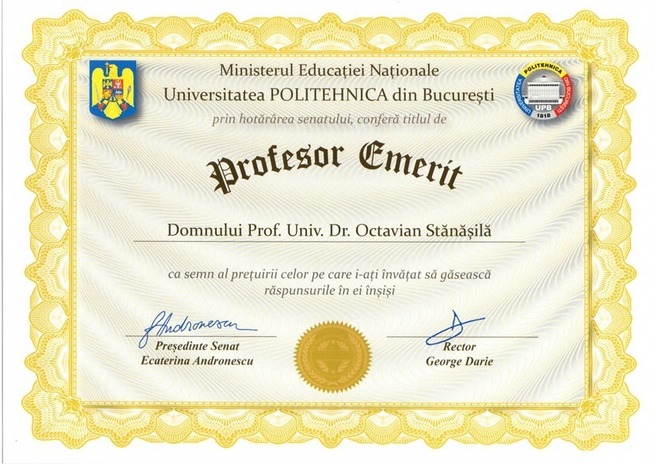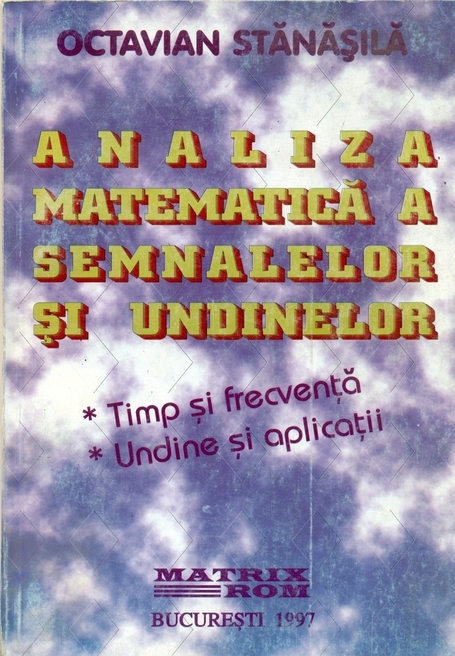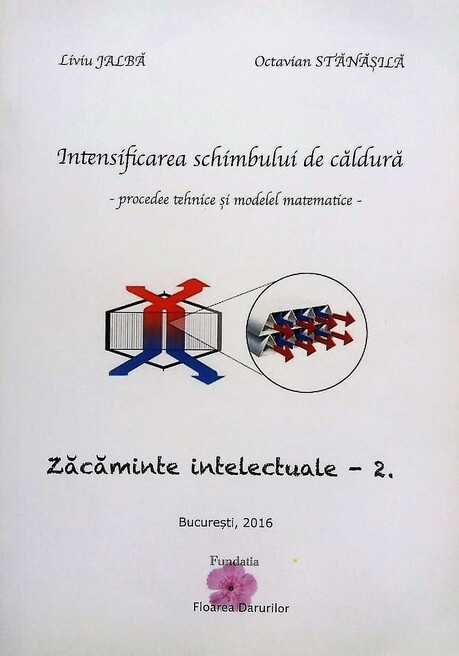OCTAVIAN STANASILAPhD
Professor Emeritus
EARLY LIFE
Born in Stoenesti, judetul Olt, ROMANIA, in family of teachers, both
with Oltenia roots. The family had four sons and three daughters. He
attended the first two years of the elementary school in Stoenesti, Olt,
a village not so far from Deveselu, a NATO military base our days.
Later, in 1993, after the 1990 political changes, prof. Stanasila was
named "an honorary citizen for Stoenesti". The family moved to
Bucharest, the capital of Romania, in 1937, in order to offer the kids a
better education. Prof. Stanasila started to read at the age of four
and soon he knew by heart at least three books: a rail schedule ("Mersul
Trenurilor"), a fairy tales book, and a good manners book for young
children.
EDUCATION1) „Aurel Vlaicu” High School, Bucharest, class of 1955
Important
professors and mentors:
Constantin IONESCU-TIU, Mathematics. Professor
Ionescu-Tiu, also an editor in chief of a prestigious math magazine,
gave the young prof. Stanasila various tasks to correct and value the
math problems solutions send to that magazine, the "Gazeta Mathematica".
2) Mathematics, University of Bucharest, Romania, class of 1960
3)
PhD
(1968): diploma work "Algebre analitice şi
algebre cvasianalitice, IMAR, with coordinator Prof. Miron
Nicolescu, IMAR - "Simion Stoilow" Institute of Mathematics of the Romanian Academy
TEACHING AND RESEARCH POSITIONS1)
Teacher assistant (1960-1964), University "Politehnica" of Bucharest UPB;
2)
Principal researcher/ scientist (1964-1972), IMAR ("Simion
Stoilow" Institute of Mathematics of the Romanian Academy, former
Institute of Mathematics of the Romanian Academy, became after the
reorganization in 1975 the Institute of Mathematics of the University of
Bucharest, which contained a very small research group affiliated to
the Faculty of Mathematics of the University of Bucharest, and another larger group, Mathematics Section of INCREST);
3)
Lecturer (1972-1977), University "Politehnica" of Bucharest UPB
4)
Professor (1977-2020), University "Politehnica" of Bucharest UPB
AWARDS AND OTHER SCIENTIFIC POSITIONS1)
„Gheorghe Lazăr” award, Romanian Academy (1974).
1)
PhD Program Coordinator (1993).
3)
Associate Member of the American Romanian Academy of Arts and Science (ARA)
4)
Member of the American Mathematical Society. AMS,
5)
Member of Mat. BALKANIKA "Societatea Matematicienilor din România" (Romanian Mathematicians, Society).
6)
Member of the Editorial Board - Mathematics Studies and Research, University "Politehnica" of Bucharest Bulletin
7) President - Romanian Chess Society
RESEARCH AREAS"analiză complexă" -
complex analysis, "matematică discretă" -
discrete mathematics, "transferul căldurii" -
heat transpherLECTURES "analiză reală" -
real analysis, "matematică discretă" -
discrete mathematics, "matematici speciale" -
applied mathematics.
MAIN PUBLICATIONS: 20 books, Masterpiece: "
Méthodes algébriques en espaces complexes", NY (1976), Paris (1978)".
Scientific Articles and Publications: 45.
OTHER PUBLICATIONS AND WORK 17 patents (in cooperation).
Invited university professor Pisa (1971),
Invited university professor Rosenburg (1971),
Invited university professor Roma (1990, 1993, 1996),
Invited university professor Bologna (1993),
Invited university professor Boston (MIT - Massachusetts Institute of Technology, 1998).Note: Inspired from
https://www.romai.ro/documente_poze/Publicatii/MAtRom/MatRom_2.pdfand Stanasila, Octavian. "Intersectii si paralelisme", Matrix Publisher, 2013


